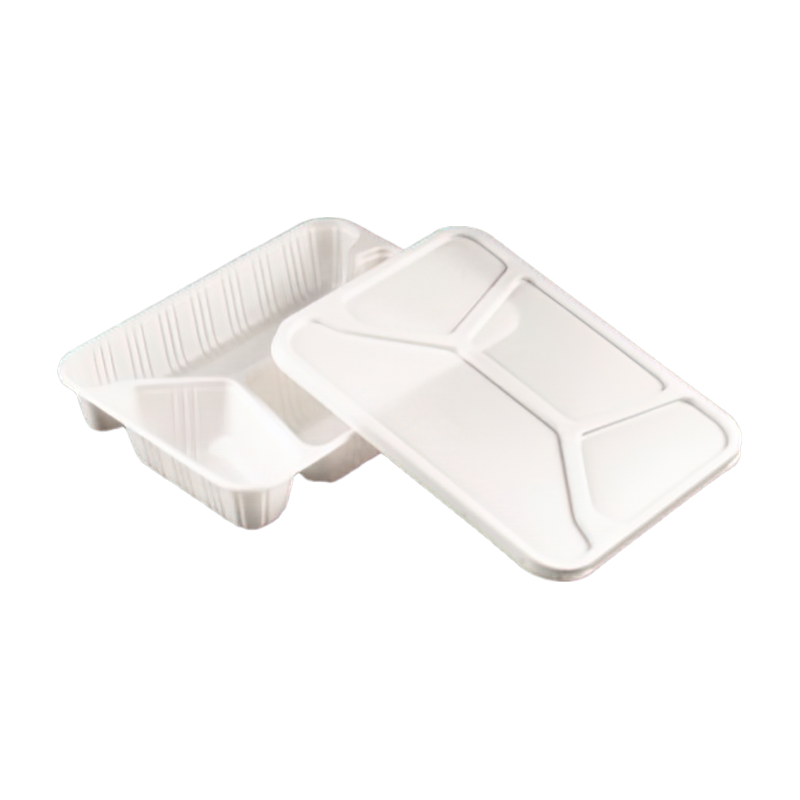How do biodegradable lunch boxes contribute to reducing plastic waste in landfills and oceans?
In an era where environmental sustainability has become a paramount concern, the introduction of biodegradable lunch boxes presents a significant advancement in reducing plastic waste in landfills and oceans. Traditional plastic containers, which can take hundreds of years to decompose, contribute massively to the growing problem of plastic pollution. These plastics often end up in landfills or, even worse, in our oceans, where they wreak havoc on marine ecosystems. Biodegradable lunch boxes offer a promising solution by breaking down more quickly and harmlessly, mitigating the long-term environmental impact associated with conventional plastics.
The biodegradation process is a key factor in how these lunch boxes contribute to waste reduction. Made from materials such as PLA (polylactic acid), PBAT (polybutylene adipate terephthalate), and PP (polypropylene), biodegradable lunch boxes are designed to decompose under natural environmental conditions. When exposed to moisture, heat, and microbial activity, these materials break down into natural components like water, carbon dioxide, and biomass within months to a few years. This rapid decomposition contrasts starkly with traditional plastics, which can remain intact for centuries, gradually breaking into microplastics that contaminate soil and water bodies.
By diverting waste from landfills, biodegradable lunch boxes significantly reduce the volume of persistent plastic waste. Landfills are rapidly filling up, and the non-biodegradable nature of conventional plastics exacerbates this problem. Biodegradable alternatives help mitigate landfill overflow by degrading into organic matter that integrates harmlessly into the environment. This not only conserves landfill space but also minimizes the environmental hazards associated with plastic waste, such as leachate production and greenhouse gas emissions.
In the context of ocean pollution, the impact of biodegradable lunch boxes is equally profound. Oceans are inundated with plastic debris, which poses a severe threat to marine life. Animals often mistake plastic fragments for food, leading to ingestion that can cause injury or death. Biodegradable lunch boxes, if they do end up in marine environments, are designed to break down more quickly than traditional plastics, thus reducing the risk of long-term pollution and harm to marine organisms. Their ability to decompose into non-toxic components helps prevent the formation of the vast floating plastic patches and microplastic contamination that plague our oceans.

Furthermore, the shift towards biodegradable lunch boxes is reflective of a broader movement towards sustainable practices. Businesses and consumers alike are increasingly aware of the environmental impact of their choices. By opting for biodegradable packaging, they support the circular economy, which emphasizes the use of renewable resources and the regeneration of natural systems. This collective effort not only addresses the immediate issue of plastic waste but also fosters a culture of sustainability that can lead to further innovations and improvements in waste management.
The advantages of biodegradable disposable lunch boxes extend beyond their environmental benefits. These lunch boxes are crafted to be durable, leak-resistant, and suitable for both hot and cold foods, making them a practical choice for the fast-food and delivery industries. Available in various sizes and configurations, such as bowls ranging from 350ml to 1750ml, barrier plates, and multi-lattice designs, they cater to diverse needs while maintaining functionality and convenience. Their use of renewable materials ensures that they meet the growing consumer demand for eco-friendly products without compromising on quality or performance.
Biodegradable lunch boxes play a crucial role in reducing plastic waste in landfills and oceans. Their ability to decompose rapidly and harmlessly, combined with their practical advantages, makes them an effective alternative to traditional plastic containers. By embracing these eco-friendly solutions, we can significantly diminish the environmental footprint of food packaging and contribute to a more sustainable future. The widespread adoption of biodegradable lunch boxes represents a positive step towards mitigating the plastic pollution crisis, protecting our planet's ecosystems, and ensuring a healthier environment for future generations.

prevNo previous article
nextWhat are the key properties of EPE foam that make it suitable for packaging and cushioning?



 English
English 中文简体
中文简体 Español
Español
















